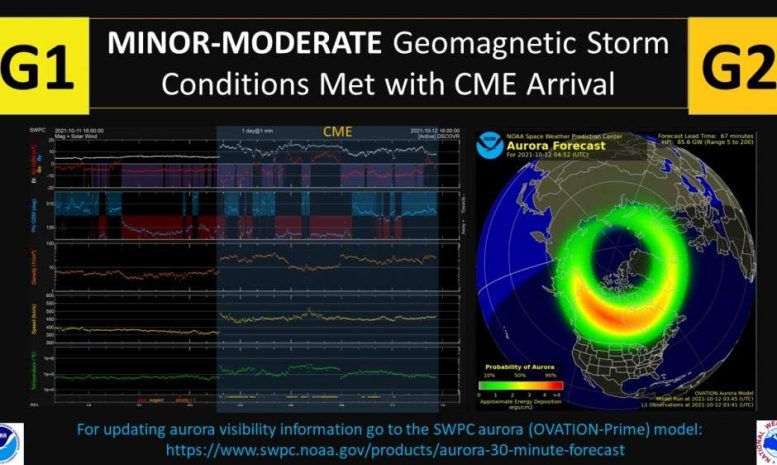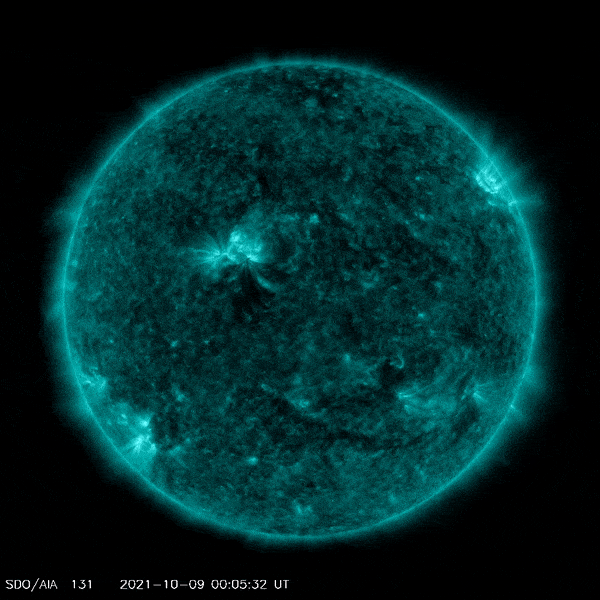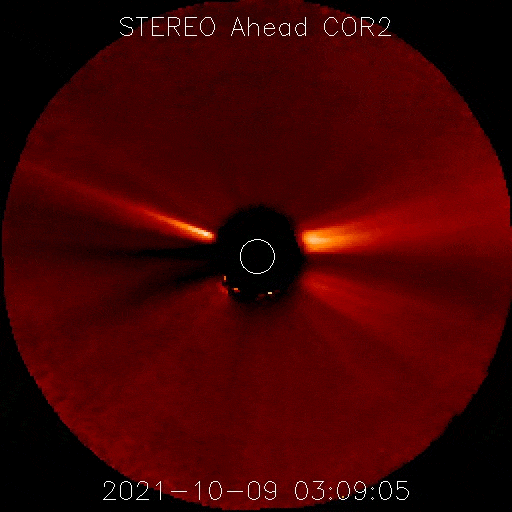Geomagnetic Storm: Solar Eruption Arrives at Earth

The CME associated with the October 9, 2021, M1 flare arrived as anticipated early on October 12, UTC-day. The CME shock front arrived at the DSCOVR spacecraft (1 million miles from Earth) at 12/0147 UTC (Oct 11 / 9:47 pm EDT) as solar wind speed increased by nearly 100 km/s and total interplanetary magnetic field (IMF) strength quickly elevated to over 15 nT. Geomagnetic activity increased as expected with the CME arrival and G1-G2 (Minor-Moderate) storm conditions were met. The CME progression remains fluid at this time and a G2 Watch is still in effect for the remainder of October 12 and a G1 Warning continues until 12/2200 UTC (6:00 pm EDT). Continue to visit our SWPC webpage for the latest updates, warnings & alerts, and forecasts. Credit: NOAA
A mass of solar material that erupted from the Sun on October 9, 2021, reached Earth on October 12. The Earth-directed coronal mass ejection, or CME, elevated the Kp index, a measure of disturbance to Earth’s magnetic field, to 6 (moderate level). Kp index levels range from 0 (quiet) to 9 (intense).
The CME was associated with an M1.6 class solar flare from Active Region 2882 on that peaked on October 9 at 6:38 UTC (2:38 a.m. EDT). M-class flares are a tenth the size of the most intense flares, the X-class flares. The number provides more information about its strength. An M2 is twice as intense as an M1, an M3 is three times as intense, etc. The flare also generated a solar energetic particle eruption that was detected by NASA’s Solar Terrestrial Relations Observatory-Ahead, or STEREO-A spacecraft, at 7:51 UTC (3:51 a.m. EDT).

Active Region 2882, shown here near the middle of the Sun’s disk, erupted with a moderate level solar flare on October 9, 2021. This animated gif shows images from the 131 Angstrom channel of NASA’s Solar Dynamics Observatory spacecraft/Atmospheric Imaging Assembly instrument. Credit: NASA/SDO
STEREO-A also detected the CME from its vantage point away from Earth. The CME’s initial speed was estimated by NASA’s Moon to Mars Space Weather Operations Office to be approximately 983 kilometers per second (610 miles per second). This and other information about the event is reported in the Space Weather Database Of Notifications, Knowledge, Information (DONKI) catalog.

The COR2 coronagraph on NASA’s Solar Terrestrial Relations Observatory-A spacecraft, which views the Sun’s corona by occluding its bright surface, detected this Earth-directed CME on October 9, 2021. Credit: NASA/STEREO
NOAA’s Space Weather Prediction Center is the official source for space weather forecasts, watches, warnings, and alerts. Visit http://spaceweather.gov for information about potential impacts from this event.
No comments:
Post a Comment